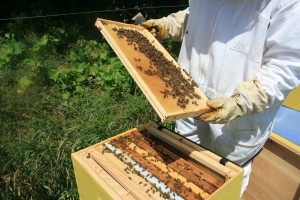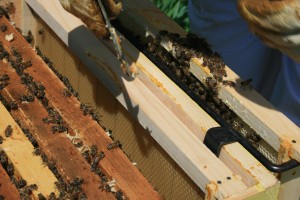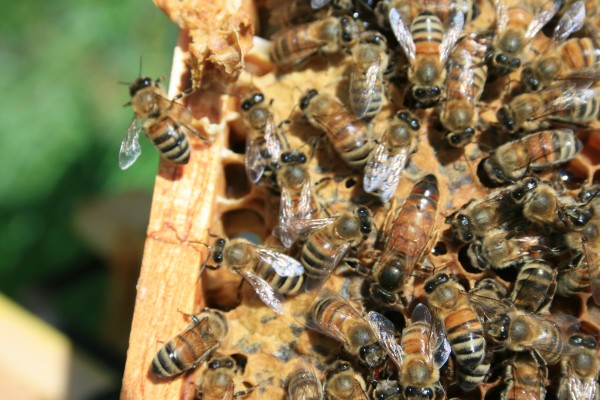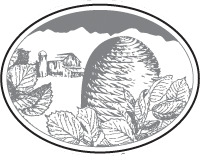Thursdays are bee days, necessitating a list of needed equipment guided by the hive record book, and careful packing of the car. We start with our home bee yard in Great Barrington and then make rounds to Egremont, Sheffield (2 stops) and Stockbridge. Here we are taking a look at progress inside a recently installed nuc. (Thanks, Eric!)

This hive has a good-sized population. In just over a week, the bees have gummed together their older frames. The brand new Frame 1 shows only the original foundation; it hasn’t yet been drawn.

A closer look at Frame 2 shows the bees’ progress in drawing out the hexagonal honeycombs from the surface of the beeswax foundation. Beeswax is the bees’ most precious commodity; it takes 7 pounds of honey to make a pound of beeswax. Usually the younger bees take responsibility for making honeycomb. They secrete wax flakes from a gland on their abdomen and shape the flakes into the six-sided comb. Newly secreted wax is snow white, as seen on this frame. Why use the hexagonal shape? It’s most efficient, holding more honey per weight of beeswax. Human math geniuses have recently completed written proof of the bees’ wisdom.

Here she is, Her Highness the Queen! Sometimes beekeepers mark queens with a dot of paint. But the paint isn’t really necessary. The queen’s elongated abdomen and different coloration makes her stand out. Why an elongated abdomen? Queens can lay their weight in eggs every day. We’ll replace this frame especially carefully, as the queen is key to the hive’s productivity. She makes her presence known to the workers by means of scent hormones, or pheromones. A queenless hive gets nothing done unless and until a new queen can be raised by the workers. Eggs destined to become queens are fed a richer diet than worker eggs, beginning on day 4.


